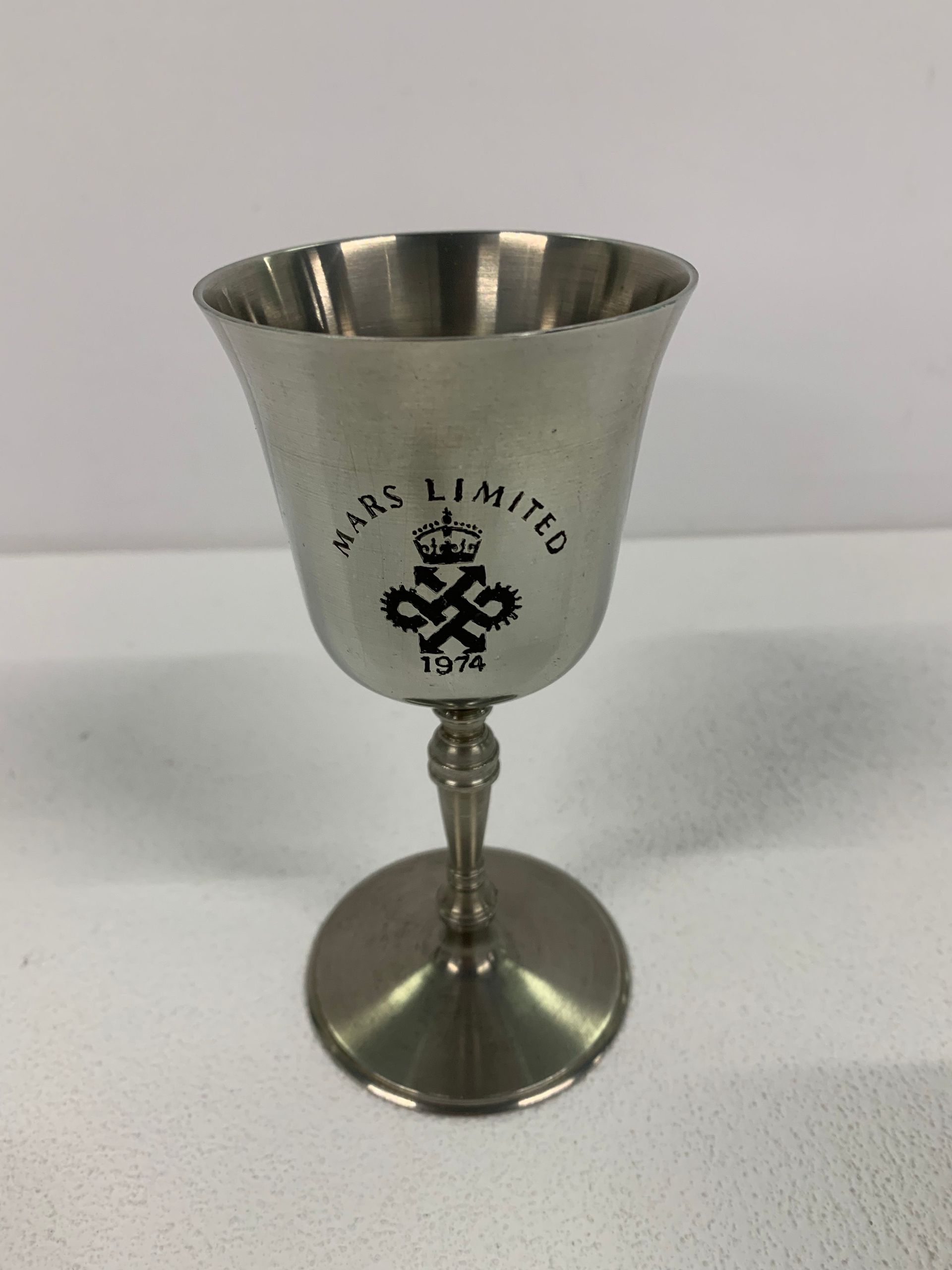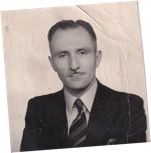
MARS - Queens Award for Exports Goblet dated 1974

This ceremonial goblet was awarded to Bounty shift line manager George Oliver at Mars. This was part of the celebrations when Mars was awarded the Queens Award for Exports in 1974. This was quite an achievement as the UK was suffering the miner’s strike and the subsequent three day week during 1973 and 1974. Mars escaped the restrictions, thanks to the Estate having its own independent Power Station that had permission by the UK Government to maintain supplies Mars won the award for a second time in 1979.
The goblet was donated to Slough Museum by the family of George Oliver
George Oliver’s story – From Mines to Mars and Manure
William George Oliver, known as George Oliver
1913—1992
George was born in Tylorstown which is a village a few miles from Maerdy in South Wales. He had a brother and a sister. He was intelligent and went to a grammar school and was usually near the top of his class. Tylorstown in the Rhondda valley, in the county borough of Rhondda Cynon
Rather than staying to take exams he left before he was 16 and went down to work in the coal mine near where they lived. Underground they were organised into gangs of five who were usually from the same family and so he joined his father's gang.
By the 1930’s the great depression had an impact on mining that left the miners looking for new work opportunites. Slough had been identified as town with growing employment where the Government set-up a training centre on the Estate to teach the miners the new skills of industry. Slough suddenly had a large influx of Welsh workers and Timbertown was renamed ‘New South Wales’.
In 1937 George started working as a Furnace man in an aluminium alloy factory called High Duty Alloys on the Slough Trading Estate. This factory made aircraft parts and so George was retained in the factory rather than going to join the army in the Second World. This was not without risk however as the factory was a key target by the Germans and was hit by a bomb in 1941.
Sophie and George became council house tenants in post-war Slough, living at 39 Faraday Road. They purchased their council house in the 1980s.
After the Second World War, George had a few factory jobs before finally joining the Mars Confectionary factory in Slough where he remained for 30 years on the ‘bounty line’. He was termed a Cook which meant he was a supervisor in charge of a production line making Bounty bars.
George retired in 1978 which allowed him to spend more time on his lifetime hobby of rose-breeding, which he first started doing in the 1955. He went on to receive an international award for developing his thorn-less rose. George’s thornless rose, Sophie, was exhibited in the 2nd ever Hampton Court Palace International Flower Show in 1991.
The show was first held in 1990 and created by Historic Royal Palaces and Network Southeast. In 1992 Network Southeast announced it was withdrawing and the RHS was the successful bidder to take over. The first RHS Hampton Court Palace Flower Show was held in 1993, and it has gone on to become the world’s largest flower show.
Rose grower, George was invited by the RHS to enter his thornless roses at the Hampton Court Palace International Flower Show in 1991 (11-14 July). He named his rose Sophie, after his wife who died in Feb-ruary, 1991, aged 74. George worked for 30 years developing his roses by suppressing the thorn gene. He reached this goal in 1979. In the following 12 years George had a lot of visits from rose growers to his colourful garden at Faraday Road, Slough.
George won an international award for developing the first thornless rose in the world in 1993, a year after his death.
The Rolex Spirit of Enterprise Award was awarded to him in 1993 for researching and developing the thornless rose. Following discovery of a rose variety bearing only an occasional thorn, a project was launched [by him in his back garden!] to completely suppress the thorn gene. After intensive inbreeding, the gene was suppressed, and a new thornless family of roses was produced. Application of hormone (GA3) in this and other situations had produced startling results.
George’s donation of his thornless rose, Sophie, filled the flower bed at Salt Hill park in Slough.
The flower bed was filled shortly before his death in 1992.

